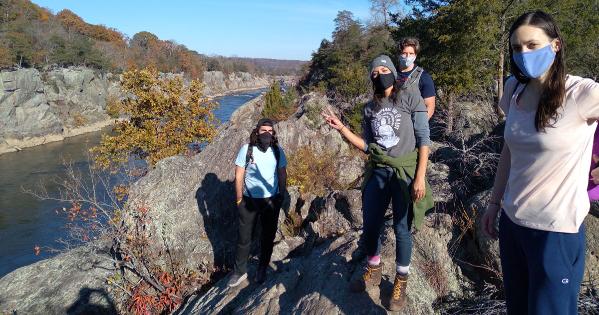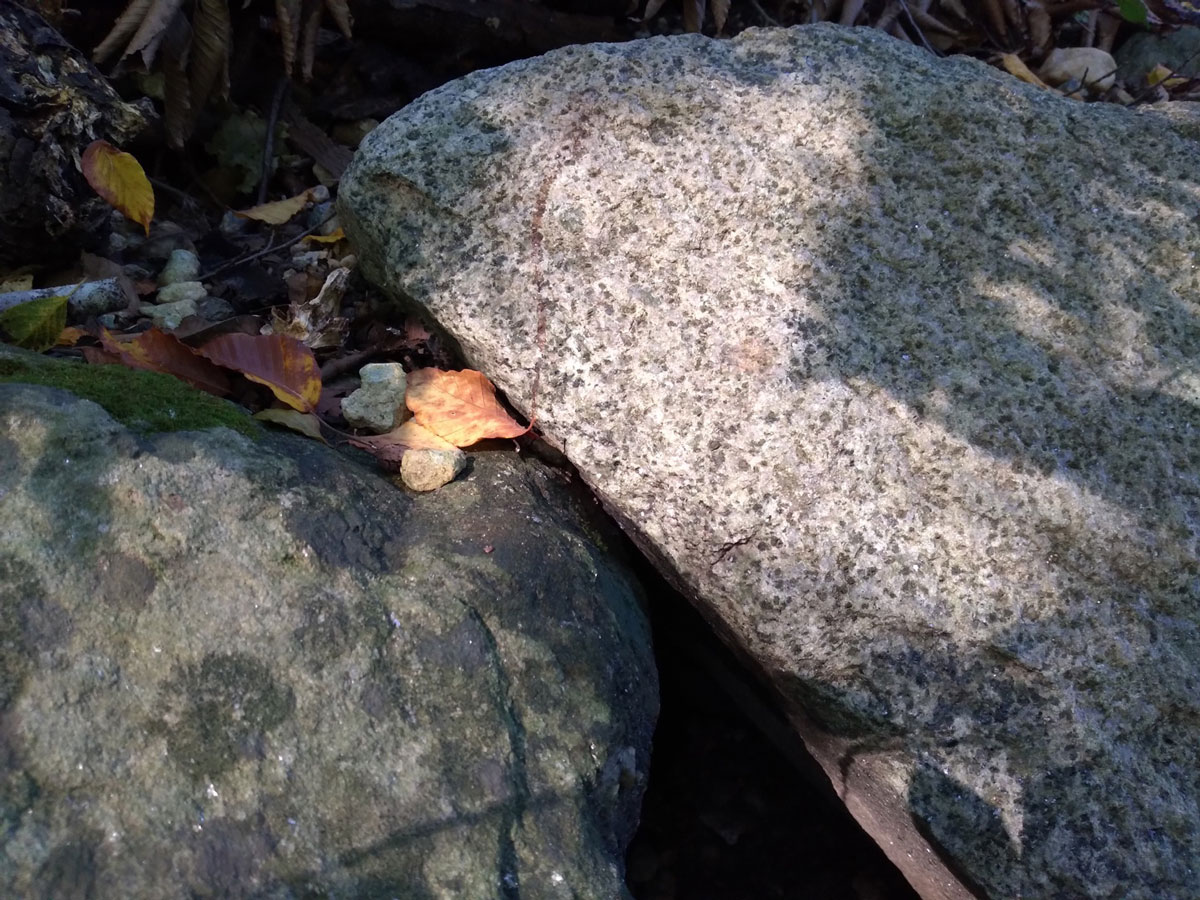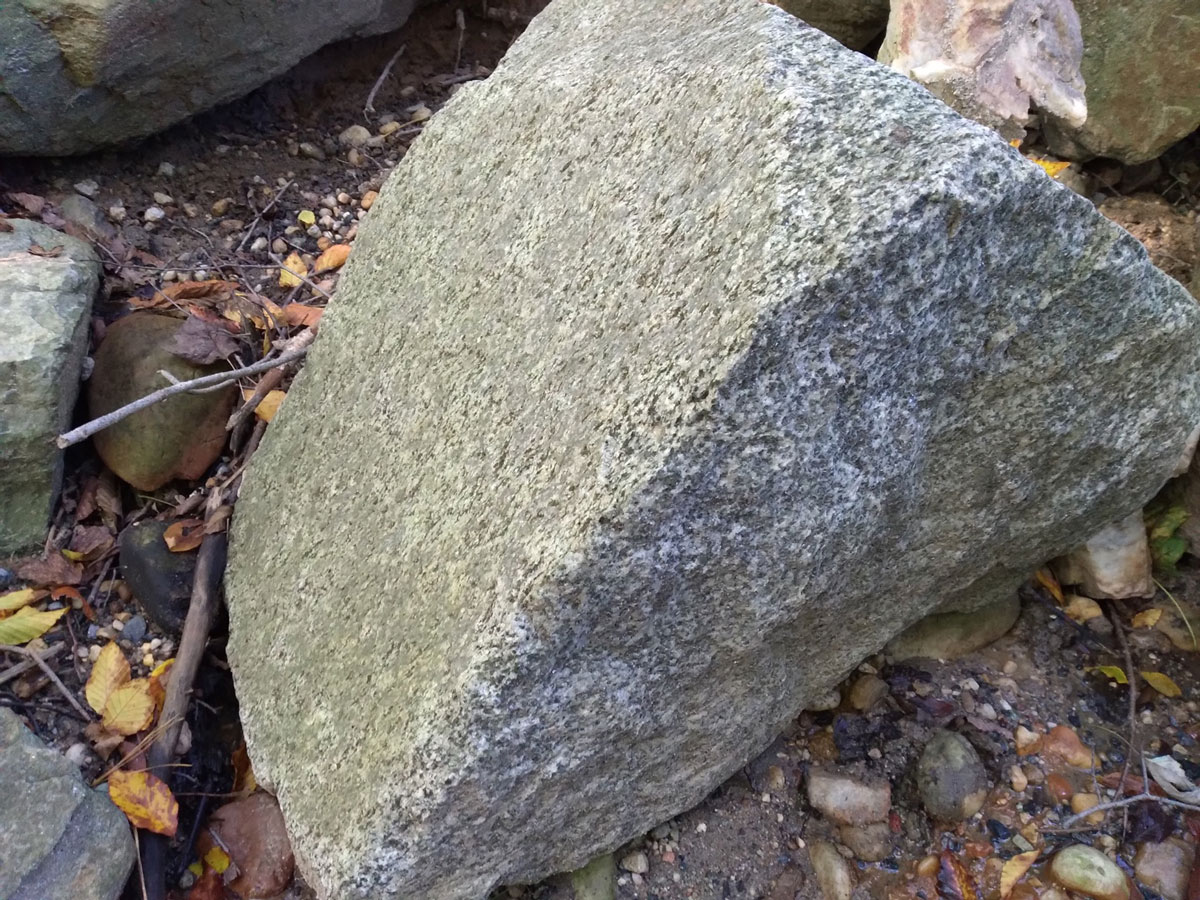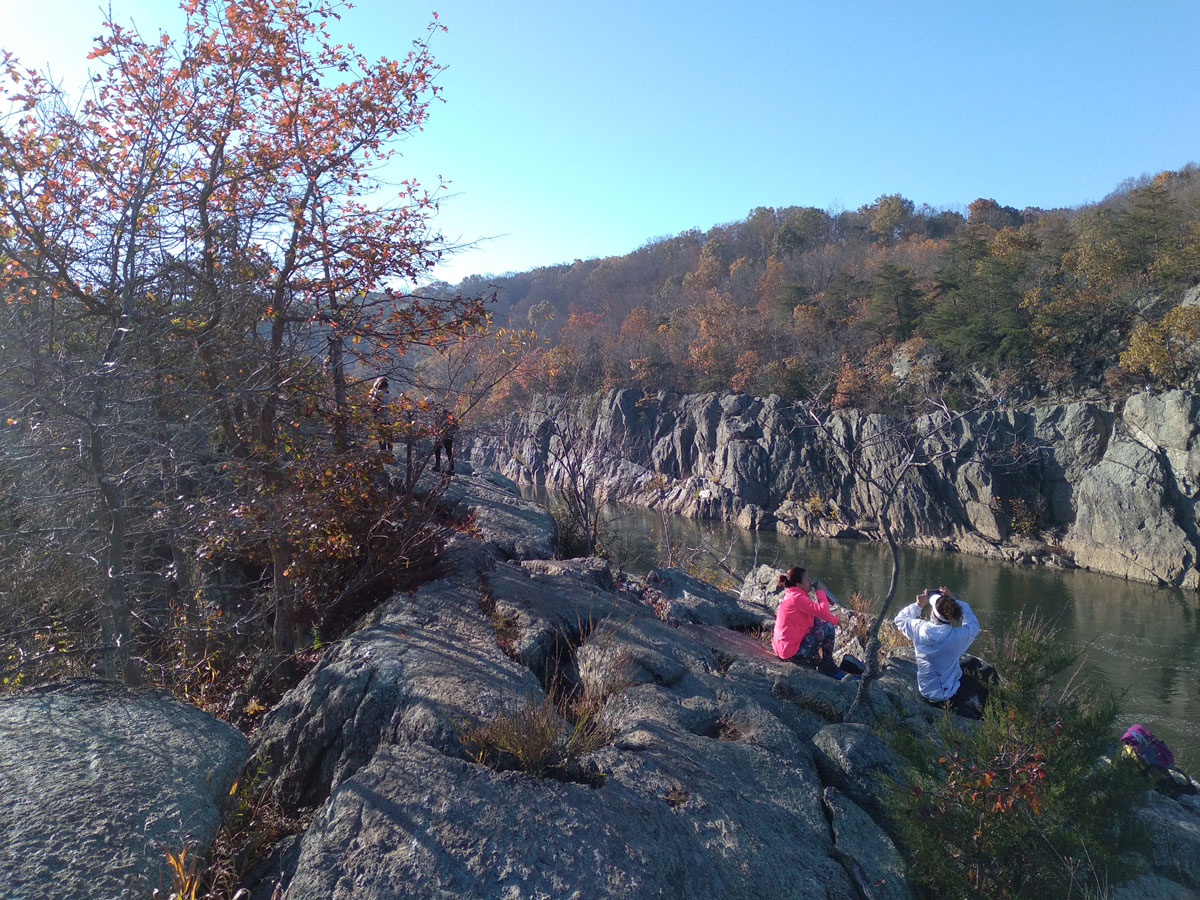Environmental Science and Geology Classes Move Outdoors

There is no better—or fun—way to really learn the concepts of environmental geology than to get outdoors and experience them yourself. This is why Professor of Environmental Science Stephen MacAvoy has been taking students from two classes, ENVS 350 Environmental Geology and ENVS 415/615 Environmental Science II, on local, masked, socially distanced hikes this semester.
“The hikes are not required for class so it's very gratifying that students will take the time to come together briefly to walk in the woods and explore some local geology,” MacAvoy says. “They don't necessarily know each other even if they have shared a zoom class, so it's nice to do socially distanced personal introductions, and they can get a reminder of how things are supposed to be.”
His students agree. "I am so fortunate to be in the College of Arts and Sciences,” says Muhamad Ilham Azhar (MS environmental science ’21). “I’ve gain new knowledge about the history, processes, and rock structure of the environment around Washington, DC, this semester. I’ve enjoyed great classes, energetic professors, and fantastic geology walks!”

In the center is phyllonite (fine grained, silica rich metamorphic rock. Partial melting caused quartz veins), lower left is metagreywacke (from cambrian/precambrian silica rich marine sediments, metamorphic).
The Rocks of DC
One recent outing was a geological hike through Battery Kemble, the National Park Service (NPS) parkland surrounding American University’s campus. A stream running through the park has cut all the way through to bedrock in some places, and it offers a rare opportunity to see the geology upon which the university sits.
Most of the Piedmont east of the Blue Ridge Mountains in our area is covered by soils created by the weathering of those mountains, says MacAvoy. “Soils can be quite deep, but under them lie the geological bones of what were once the roots of mountains,” he explains. “American University sits on metamorphic rock created from silica-rich ocean sediments called the Sykesville Formation. The metamorphic rock dates from the Cambrian Period (about 500 million years ago ± 100 million years...it is impossible to age date metamorphic rock).”

Tonalite (right side) in stream bed (460(ish) million years old). Note large biotite mica flakes. The rock is a partly metamorphic granite, so technically it's a gneiss. Intrusive. This one doesn't have strong banding.
Students got to take a good look at the bedrock under the university. It’s called metagreywacke, says MacAvoy. “Greywacke is a hard, darkish, poorly sorted sandstone or clay. If you put ‘meta’ in front of a sedimentary rock, it means ‘metamorphosed,’ hence ‘metagreywacke.’ Mixed with the metagreywacke is quartz-veined phyllonite, which is partially melted silica rich metamorphic rock. The melting was caused by contact with a plutonic igneous intrusion around 460 million years ago.”

Tonalite again. A bit more banding in this one.
In the park’s stream bed, the students found a great example of Kensington Tonalite—part of the plutonic intrusion, MacAvoy explains. “From the stream bed looking back towards AU, we could see some rather nasty looking iron oxide deposits around a pipe—enough to give one pause as you are standing in the stream.”

Iron oxide build up around drainage (left).
Further down the stream, the group discovered that the bedrock was well exposed, and the water flowed over a sheet of pure bedrock without cobbles or sand. It exposed phyllonite, a partly metamorphic fine-grained rock, which has layering typical of schist. The mineral layers are a little more resistant to weathering than the non-layered rock, so they appear as ridges.
The Rocks of Virginia
Another field trip this semester took place a little further away, at Great Falls National Park in Virginia. There, MacAvoy met five of his graduate students (who drove themselves there), and together they explored the rocks above the river.
Students appreciated the opportunity to get outdoors and learn. “I’m so grateful that faculty and staff at AU are giving students opportunities for interactive learning during this pandemic. Professor MacAvoy has been reaching out to his students to set up field trips and guided nature walks all over DC!” said Hannah Nisonson. “As a first semester master’s student who has only seen her cohort in person a handful of times, I love to take advantage of all times I can responsibility meet up with other AU students and come to campus. I am not actually in MacAvoy’s class, but my other professors at American have already taught me so much during my little time spent in graduate school. The walk with Professor MacAvoy was especially riveting because of its hands-on nature and seeing how dedicated he is to teaching his students about the environment. I can’t wait to follow this passion throughout my time in grad school!”

MacAvoy’s enthusiasm is contagious. He describes one unusual thing that happened while they were on a popular trail. “I was explaining some of the geology we could see from all the exposed rocks, and a small crowd of other gathered of other hikers,” he says “Lots of questions, and I ended up having a little community ‘teach in.’ I love my job.”
